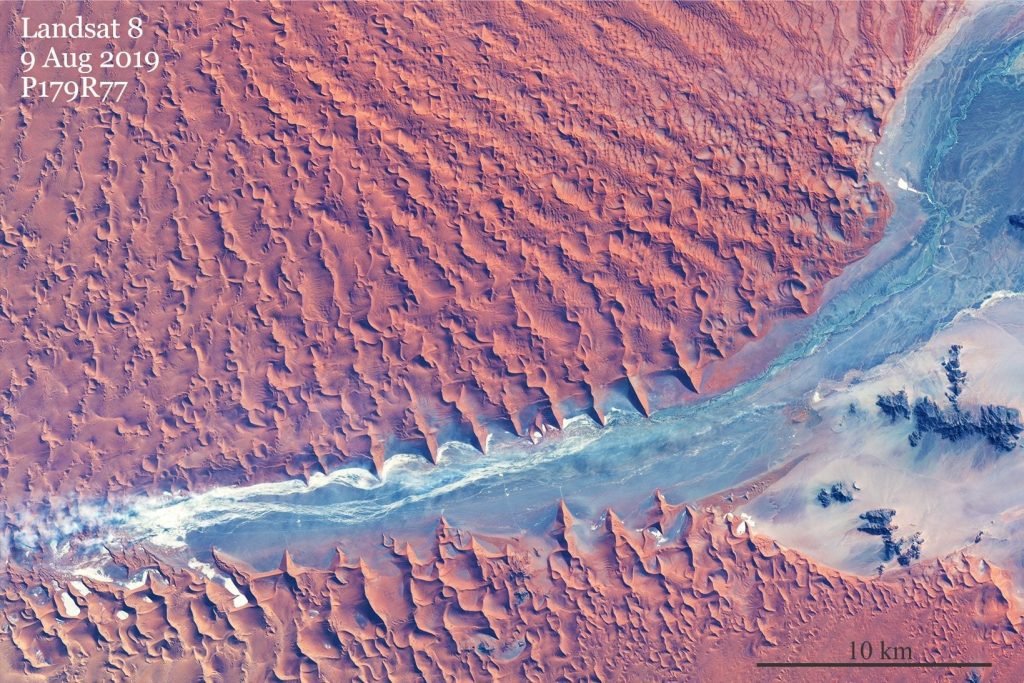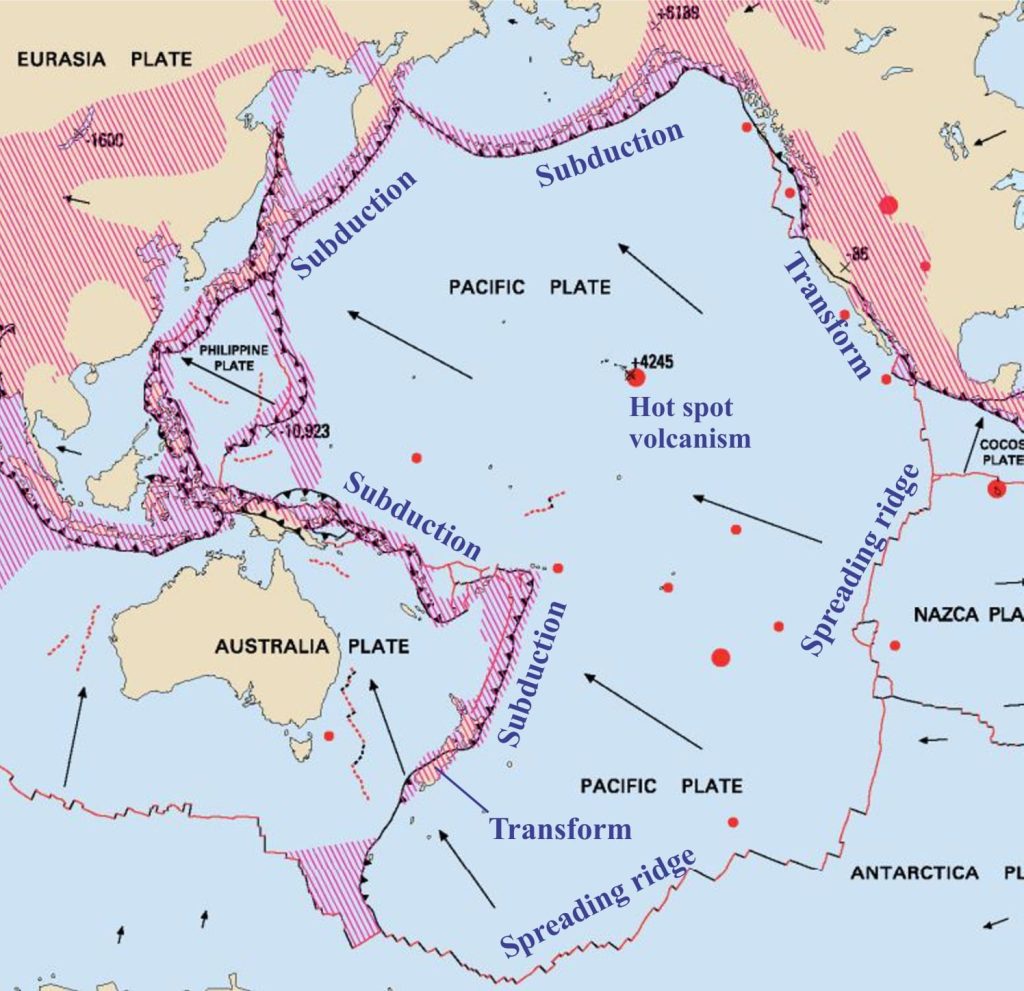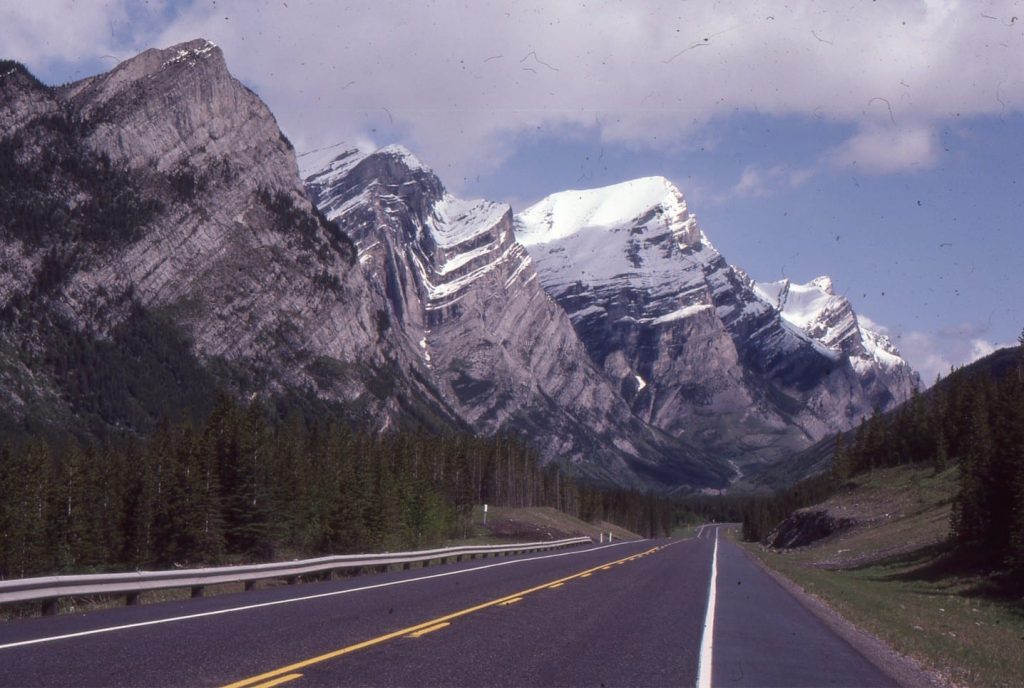
An introduction to the dynamics of Sedimentary basins.
I don’t know about you, but at an outcrop I tend to become engrossed in the minutiae of sedimentary grains, beds and bedforms, fossils, and any discernible stratigraphic trends. At some, often indefinable point in these activities, something will trigger a reminder that everything at this place is part of a much bigger picture – grains to beds and bedforms, to facies and facies associations, to entire depositional systems and thence to systems tracts and stratigraphic sequences, culminating in what is probably the least easily imagined, sedimentary basins. Our expanding vision has journeyed from a hand lens to the entire lithosphere. We take similar journeys for all of geology. It is what excites us – deciphering the universe in a grain of sand or a single crystal.
This series of posts introduces sedimentary basins. We define a sedimentary basin as a region of the crust that is subjected to prolonged subsidence. Subsidence here means generating the space to accommodate up to 10-20 km of sediment; time scales are commonly measured in 106 to 108 years. This amount of subsidence inevitably involves not just the Earth’s crust, but also the upper mantle – in other words, the lithosphere.
Subsidence depends on several geodynamic factors:
- The compositional layering of the lithosphere. Think of this in terms of two end- members; oceanic lithosphere that contains a thin crust of mafic igneous rock (averaging 6-7 km) that overlies the mantle, and continental lithosphere that contains much thicker, largely felsic crust (average 35 km thick).
- The rheology of the lithosphere; rheology describes the mechanical response of the crust and upper mantle to stress. Again, we can think of this in terms of three end-member behaviours – elastic, plastic (including ductile flow), and viscous behaviour. The rheological properties of the lithosphere also control the isostatic response to loading and unloading of the crust.
- The thermal state of the lithosphere; here, the geothermal conditions have a strong influence on rock density and buoyancy, fluid convection, and the mechanical response of rock such as the transition from brittle to ductile behaviours.
Sedimentary basins and plate tectonics

Tectonic plates are, by definition, lithospheric structures. The geodynamic behaviour of sedimentary basins is inextricably tied to stresses inherent to plate motions. Most modern basins are located at or close to plate boundaries, and in general we can successfully apply these modern analogues to interpretations of ancient examples; sometimes referred to as actualistic models. We begin our assessment of modern and ancient sedimentary basins by recognizing their association with:
- Divergent, extensional or rifted margins,
- Convergent margins, mostly subduction and/or collision related
- Transform margins bound by lithosphere-scale strike-slip faults, and
- Intraplate settings, that are distant from plate boundaries but are subjected to long wavelength (far-field, i.e. a few 100 km) buckling stresses generated by plate interactions.
The four types of plate boundary are the most basic; there are numerous hybrid boundaries such as transpressional and transtensional fault systems that combine strike-slip motion with convergence or extension.
Basin subsidence mechanisms
The important sedimentary basin subsidence mechanisms have been conveniently summarized by Ingersoll (Table 1.2, 2012 – PDF available), and are reproduced here with some additional commentary. Subsidence mechanisms for each type vary according to the geodynamic factors noted above and the nature of the plate boundary. Of the seven mechanisms listed below, the first four are the most common.
- Crustal thinning by extension (rifting) that produces ductile stretching and/or brittle behaviour manifested as block faulting. Heat flow under these conditions tends to be high.
- Cooling and thickening of the upper mantle (the mantle lithosphere) that follows mechanical stretching (rifting). The attendant changes in lithosphere density promote subsidence. In the oceanic realm, this is manifested as increasing water depths with distance from spreading ridges.
- Placing sedimentary and volcanic loads on the crust: The accumulation of thick sediment and volcanic rock will induce:
- An isostatic response (subsidence) as the mantle lithosphere adjusts to regional density contrasts, or,
- Flexure (bending) of the lithosphere. Note that both responses are elastic – if the loads are removed (for example by erosion of sediment or melting of an ice sheet) then the lithosphere will rebound.
- Tectonic loading of the crust: This is most evident in overthrust fold belts; common examples include foreland fold and thrust belts, and structurally telescoped accretionary prisms above subduction zones. As with sedimentary loads, the response is isostatic and flexural. This kind of loading is generally referred to as supracrustal. Loading by gravitational collapse of uplifted terranes will also produce an isostatic or flexural response.
- Subcrustal tectonic loads can also be produced by underplating of lithospheric slivers along convergent margins. Underplating takes place at depth (10s of km) and can significantly alter the overall structure and composition of the lithosphere.
- The flow of dense asthenosphere is hypothesized along some convergent margins where the overlying lithosphere is delaminated during subduction.
- In the deep crust, an increase in density occurs as a function of temperature, pressure and fluid composition (crustal densification). If these metamorphic reactions proceed fast enough, the increased density can affect the gravitational stability and buoyancy of the crust. Subsequent gravitational collapse may induce subsidence at shallower levels of the crust.

Importantly, subsidence mechanisms may change during the life of a sedimentary basin, particularly if there are substantial changes in plate trajectory; the evolution of basin subsidence kinematics is reflected in the stratigraphic patterns of sediment fill. For example, Western Canada Sedimentary Basin began as continental rift in the late Precambrian, but spent most of its Paleozoic and early Mesozoic life as a passive margin where subsidence was determined by the rate of lithospheric cooling and sediment loading during sea floor spreading. Beginning in the Middle Jurassic, Cordilleran terrane (plate) collisions generated a foreland fold and thrust belt that structurally dismembered the leading edge of the thick passive margin succession. The resulting tectonic load caused lithospheric flexure and accumulation of thick clastic sediment in the adjacent foredeep – excellent recent summaries of North American Phanerozoic basins, their stratigraphy and tectonic evolution are presented in The Sedimentary Basins of the United States and Canada (edited by Andrew Miall, 2019).
Topics in this series
The rheology of the lithosphere
Isostasy: A lithospheric balancing act
The thermal structure of the lithosphere
Classification of sedimentary basins
Stretching the lithosphere: Rift basins
Nascent conjugate, passive margins
Basins formed by lithospheric flexure
Accretionary prisms and forearc basins
Basins formed by strike-slip tectonics
Allochthonous terranes – suspect and exotic
Source to sink: Sediment routing systems
Geohistory 1: Accounting for basin subsidence
Geohistory 2: Backstripping tectonic subsidence

















